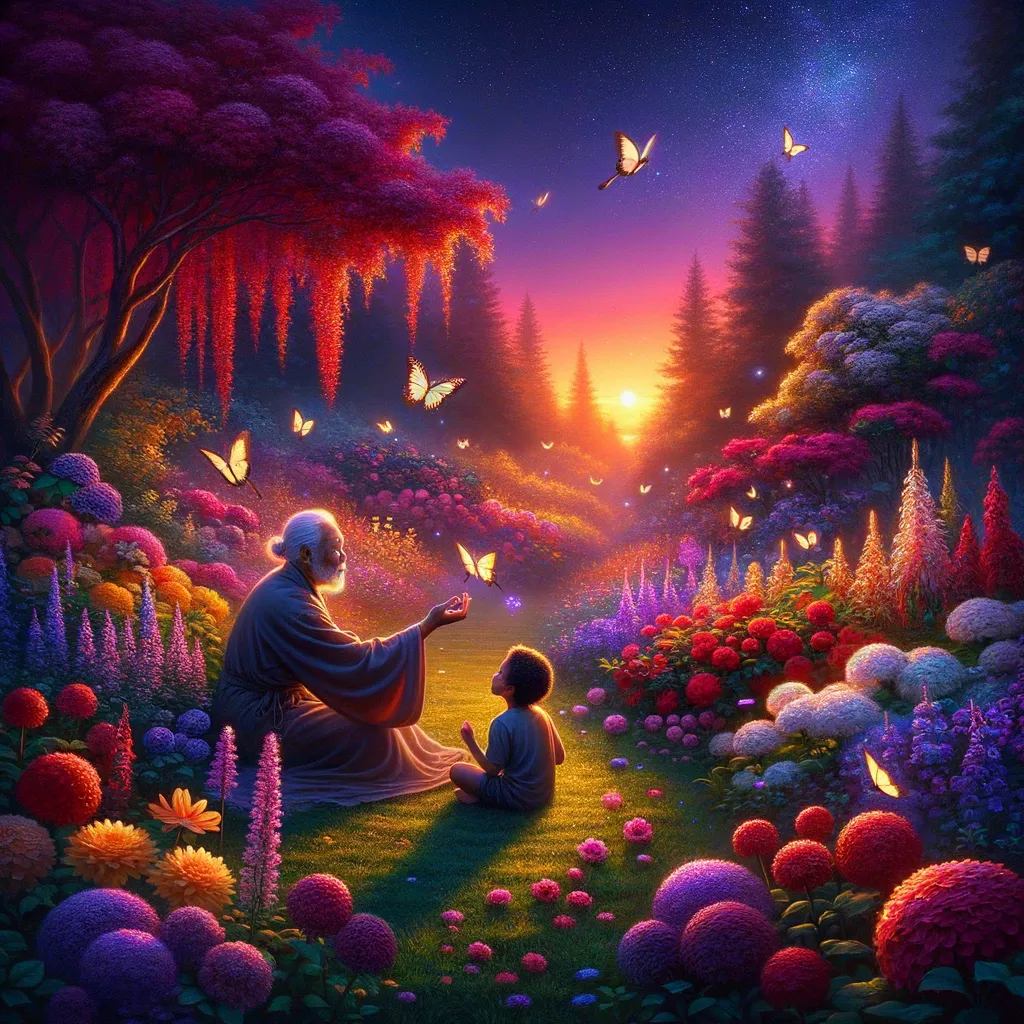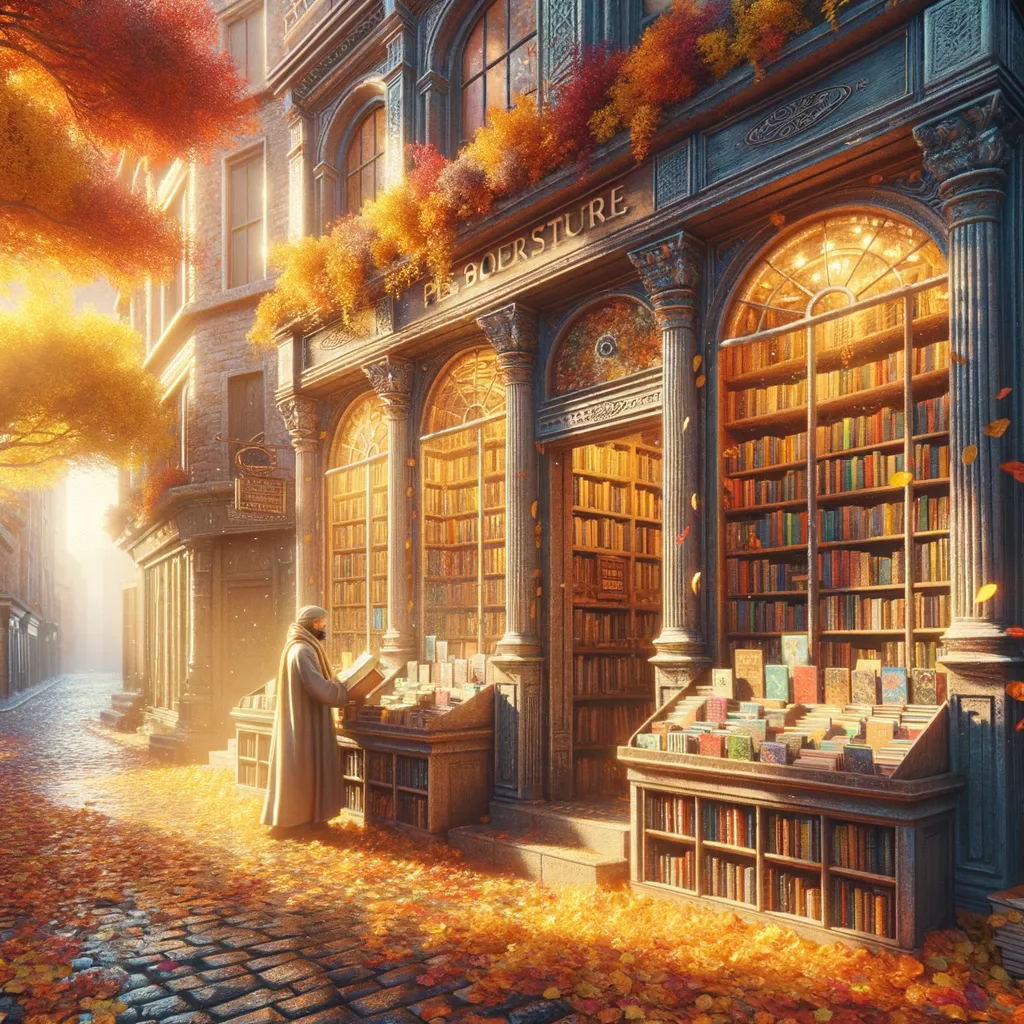Unveiling Nature’s Secrets: A Journey into Wonder
In a garden alive with vibrant colors and whispers of the wind, a moment of stillness unfolds, revealing the delicate dance of petals and the intricate patterns of butterflies. As curiosity blooms, a guide encourages a child to kneel and feel the heartbeat of the earth, transforming mundane observations into extraordinary discoveries. Each question posed opens a door to imagination, bridging the child’s experiences to the vast tapestry of human curiosity, filled with stories of exploration and vulnerability. As the sun sets and stars begin to twinkle, they share dreams and fears, uncovering that wonder thrives in connection and gratitude, turning fleeting moments into treasures. Ultimately, the child is left with a profound question, inviting them to ponder how they will nurture wonder amidst the rush of life, ensuring that the magic of the garden lingers in their heart.
In the memory of May 28, 2002, I stood in a garden that seemed to breathe with life, each flower a small universe unto itself. The sun cast a warm, golden hue, illuminating the delicate petals of blossoms that danced gently in the breeze. It was a day that felt suspended in time, a rare moment when the chaos of the world faded away, and wonder took its rightful place at the forefront. I could not help but think about how easily such moments slip through our fingers in a world that races forward, often forgetting to pause and marvel at the simple beauty surrounding us.
To teach a child the art of wonder, I would begin with the garden, a living canvas where nature’s palette spills over with colors both vibrant and muted. We would explore the intricate patterns of a butterfly’s wings, each design a testament to the delicate architecture of life. I would encourage them to kneel down, to get close enough to feel the heartbeat of the earth in the rustle of leaves and the hum of insects. In those quiet observations, the child would discover that wonder is not merely found in grand events, but in the details—the unfurling of a fern, the symmetry of a spider’s web glistening with morning dew.
As we wandered through this natural sanctuary, I would emphasize the importance of stillness. In our fast-paced lives, stillness often feels like a luxury we cannot afford. Yet it is in those moments of silence that the world reveals its secrets. I would invite them to close their eyes and listen—to the whispering wind, to the chorus of birds, to the distant laughter of children playing. There is magic in sound, a symphony that plays out in the background of our daily lives, waiting for attentive ears to discover it.
Encouraging curiosity would be paramount. I would present the child with questions rather than answers, allowing their imagination to take flight. “What do you think the flowers are talking about?” or “If the clouds could dream, what would they dream of?” Each question would open a door to a world filled with possibilities, where the mundane transforms into the extraordinary. The act of wondering itself would become an adventure, a journey through the mind that expands their view of reality.
But wonder is not solely the domain of nature; it exists in the stories we weave and the connections we forge. I would share tales of exploration and discovery—of ancient civilizations that marveled at the stars, of scientists who dared to ask ‘why,’ and of artists who painted their dreams onto canvas. These stories would serve as a bridge, linking the child’s own experiences to the vast tapestry of human curiosity and creativity.
In those moments of storytelling, I would weave in the idea that wonder often comes hand in hand with vulnerability. It requires us to open our hearts and minds, to embrace uncertainty, and to accept that not all answers are clear-cut. The child would learn that it is perfectly okay to feel small in the face of the universe, to acknowledge the unknown as a companion rather than an adversary. This understanding would foster resilience, teaching them to find beauty even in ambiguity.
As the sun dipped lower in the sky, casting long shadows across the garden, I would guide the child toward the evening stars beginning to twinkle. The night sky would become our canvas for dreams, a reminder that wonder is not limited to the light of day. I would invite them to share their dreams, their hopes, and their fears, creating a safe space where wonder can thrive in the darkness. In this connection, we would discover that wonder is a shared experience, a bond that unites us all.
Yet, even as we explored these depths, I would gently remind them of the importance of gratitude. To recognize the beauty of a moment is to honor it, to cherish the fleeting nature of existence. Every flower, every breeze, every shared smile becomes a treasure when viewed through the lens of appreciation. In cultivating gratitude, we lay the foundation for a life rich with wonder, making it a habit rather than a rarity.
As the evening grew cool, we would sit together, surrounded by the quiet hum of the garden settling into night. I would take a moment to reflect on the journey we had shared, the small discoveries that had sparked joy and curiosity. It would be a reminder that the art of wonder is not merely about seeking; it is about being present, about allowing ourselves to be surprised by the world.
Ultimately, I would leave the child with a question that echoes long after the garden has faded from view: In a world that often rushes past moments of quiet marvel, how will you choose to cultivate wonder in your own life?
In the stillness of a garden, where each petal tells a story and the whispers of nature invite curiosity, lies the profound truth that wonder thrives not in grand spectacles, but in the delicate details of existence.



